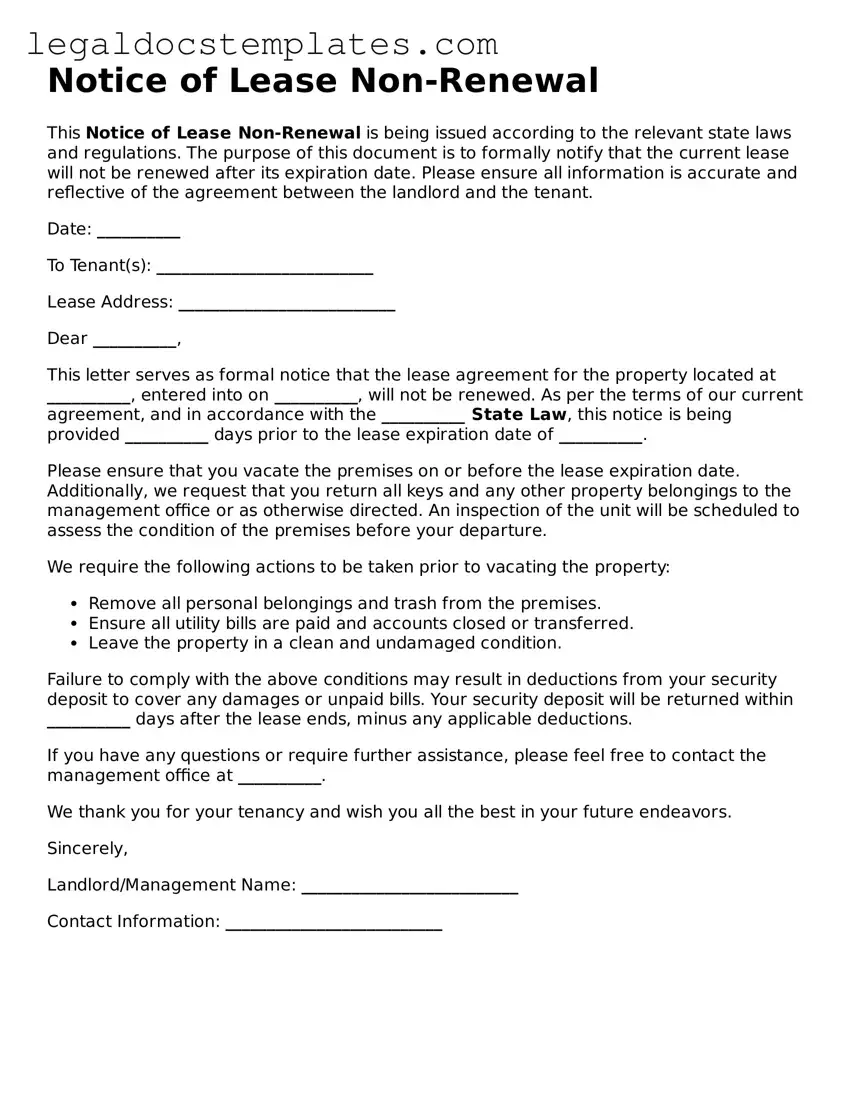Notice of Lease Non-Renewal
This Notice of Lease Non-Renewal is being issued according to the relevant state laws and regulations. The purpose of this document is to formally notify that the current lease will not be renewed after its expiration date. Please ensure all information is accurate and reflective of the agreement between the landlord and the tenant.
Date: __________
To Tenant(s): __________________________
Lease Address: __________________________
Dear __________,
This letter serves as formal notice that the lease agreement for the property located at __________, entered into on __________, will not be renewed. As per the terms of our current agreement, and in accordance with the __________ State Law, this notice is being provided __________ days prior to the lease expiration date of __________.
Please ensure that you vacate the premises on or before the lease expiration date. Additionally, we request that you return all keys and any other property belongings to the management office or as otherwise directed. An inspection of the unit will be scheduled to assess the condition of the premises before your departure.
We require the following actions to be taken prior to vacating the property:
- Remove all personal belongings and trash from the premises.
- Ensure all utility bills are paid and accounts closed or transferred.
- Leave the property in a clean and undamaged condition.
Failure to comply with the above conditions may result in deductions from your security deposit to cover any damages or unpaid bills. Your security deposit will be returned within __________ days after the lease ends, minus any applicable deductions.
If you have any questions or require further assistance, please feel free to contact the management office at __________.
We thank you for your tenancy and wish you all the best in your future endeavors.
Sincerely,
Landlord/Management Name: __________________________
Contact Information: __________________________
